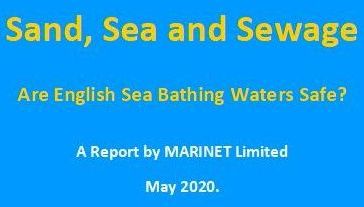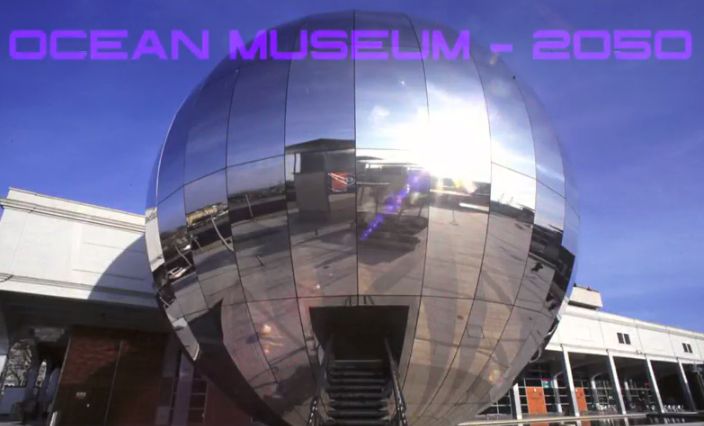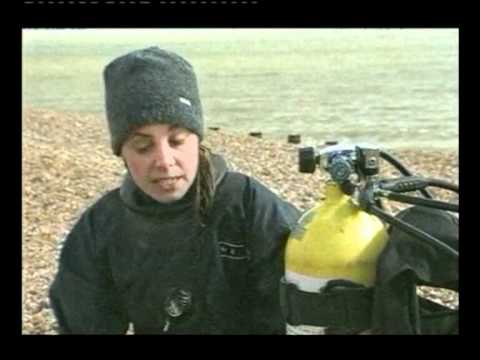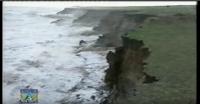Objections to Dredging Licence renewal offshore to Great Yarmouth
 As you already will well know a notice of an application for renewal of a licence to further dredge off Great Yarmouth was placed in the local newspaper immediately following the massive loss of coastline, dune defences and beaches in April. Needless to say, considerable resistance has arisen in all quarters. Here as samples are MARINET’s letters of opposition, plus one from one of several shoreline communities and councils.
As you already will well know a notice of an application for renewal of a licence to further dredge off Great Yarmouth was placed in the local newspaper immediately following the massive loss of coastline, dune defences and beaches in April. Needless to say, considerable resistance has arisen in all quarters. Here as samples are MARINET’s letters of opposition, plus one from one of several shoreline communities and councils.
Letter of objection sent from Stephen Eades:

Allington House
Allington
Chippenham
Wiltshire SN14 6LN
Tel. 01249 653972
email hidden; JavaScript is required
8th July 2013.
For the attention of: Lindsy Booth-Huggins, Marine Management Organisation.
Dear Lindsy,
Marine Aggregate Licence Application: Areas: 212, 240, 328B and 328C.
I write on behalf of Marinet, the Marine Network of Friends of the Earth and affiliated organisations/individuals, in the matter of the marine aggregate licence application for Areas: 212, 240, 328B and 328C, ref. MLA/2013/00119. This submission compliments that of Mike King, Great Yarmouth, who has also commented on behalf of Marinet.
The essence of this submission is that we believe the offshore/onshore wave model which supports this application is flawed in terms of its technical construction, and thus underestimates the intensity of the offshore/onshore wave regime and the consequential severity of the coastal erosion experienced along the adjacent coastline. Marine aggregate dredging increases wave height and thus the nature of the offshore/onshore wave regime, particularly during adverse weather conditions.
The licence application is supported by work done by HR Wallingford, 2011c. Marine Aggregate Regional Environmental Assessment: Wave Study (part of Appendix A to MAREA). Tech. Note DDR4472-04. HR Wallingford, Wallingford, 81p. You can download a copy of report DDR4472-04 (Appendix A of the MAREA) from the Marine Aggregate Regional Environmental Assessment Document Repository (http://www.marine-aggregate-rea.info/documents )
The burden of the argument is simple. If you deepen the water by lowering the sea bed, then you strengthen the “wave” of the waves offshore. In other words, the waves are larger and deeper. This in itself is probably acceptable, but it becomes a serious problem during times of strong winds, especially easterly or northerly winds which are driving the waves towards the coast. Strong winds, as everyone knows, increases the size of waves. Surfers enjoy the result, coastal inhabitants often fear it.
Thus if one knows the nature of the winds and their strength, one is able to create a wave model – in other words, one is able to predict the height, frequency and force of the waves arriving on the coast during times of severe weather. Essential information for predicting coastal erosion.
What we believe the aggregate companies have done is to fail to properly represent the nature of the wave regime.
This misrepresentation arises if you base your wave model on land-based meteorological data i.e. wind speeds recorded by coastguard stations and other facilities on land, or on marine data sourced from locations other than the area in question. In reality, the winds at sea (which drive the wave model) are markedly more forceful than those on land. They have greater strength. Thus if you want to predict and calculate the nature of the wave regime, you must use sea-based meteorological data e.g. from offshore buoys and weather stations, and if you use marine data it must be sourced from the area in question, otherwise a similar understatement of wind speeds may occur.
In the past, the aggregate companies have not always done this. Some of their meteorological data has been land-based. We asked if the MAREA wave model similarly used land-based data rather than marine based data. We were not given an answer by the aggregate companies to this question.
The wave model for Areas: 212, 240, 328B and 328C is based on the MAREA wave model.
Accordingly, we ask the Marine Management Organisation to meticulously check the wave model being employed in this licence application and, in particular, to determine whether the wind speeds employed by the wave model are sourced from the offshore area in question (Areas 212, 240, 328 B and C). If they are not sourced from this specific area of the sea then the wave model’s basis, in terms of essential data for its calculation, is flawed. Consequently assertions about the nature of coastal erosion likely to result from the continued operation of the marine aggregate dredging licence in these areas is probably similarly flawed too.
Such flaws, if established, are grounds for rejection of the licence application.
We would be interested to know the results of the MMO’s expert examination of the wave model employed by this licence application.
Yours sincerely
S. D. Eades
On behalf of Marinet.
=============================================
Letter of objection sent from Pat Gowen:
From: Pat Gowen [mailto:pat.gowen@ntlworld.com]
Sent: 10 July 201321:27
To: Booth-Huggins, Lindsey (MMO)
Subject: Aggregates Dredging Application MLA/2013/00119
On behalf of the North Sea Action Group, the Aggregate Dredging section of MARINET and myself as a coastal bungalow owner at Hemsby, near Great Yarmouth, about to see his property destroyed by the coastal erosion brought about following intensive and continual offshore aggregate dredging, having already lost one bungalow by such already, I would ask the MMO to oppose the Aggregates Dredging Application MLA/2013/00119
I would wish to amplify those grounds for doing so given by Mike King and Stephen Eades in their evidence given on the lack of meaningful information given on the wave regime, and add to this that a further deepening of the offshore seabed, which in dredged areas has already been deepened by up to10 metres by previous dredging, will further draw downdraw down The process by which tides and wave motion remove (draw down) material from a beach and pull it out to sea. A sandy beach experiencing draw down is thus denuded of its sand. The process can be natural (i.e. winter storms) or can be artificially caused (e.g. aggregate dredging, whereby the dredging of sand and gravel offshore causes sand to be drawn down from the beach in order to replace the material which has been dredged). the beaches as the steeper beach created by sand stripping has a far greater gravitational run off of sand coverage. Further, that it is likely that the loss of the cohesive granular sand taken by dredging and the return of the finer silt and sand washed off overboard means that the structural solidity element of associate beaches is changing as for the worse as the ratio worsens.
I would ask that the MMO study the many reports and scientific research papers created by expert independent bodies that show conclusively that Offshore Aggregate Dredging is a main (if not the main) cause of coastal erosion. There are many such ‘Scientific Studies from around the world on the erosion resulting from offshore sand and gravel dredging’ to be seen on our website.
A comprehensive briefing paper is to be seen at https://www.marinet.org.uk/campaign-article/marinet-briefing-paper in which I have explained in full detail the impact of Offshore Aggregate Dredging, and a further treatise on coastal defences under ‘Why Canute Failed – A Treatise on Sea Defences’ at https://www.marinet.org.uk/coastaldefences/canute.html Of particular significance is the second ‘Sandpit’ report from a large group of independent European scientists concerned with the impact of Offshore Aggregate Dredging and explaining the mechanism that may be seen at https://www.marinet.org.uk/campaign-article/the-second-sandpit-report-a-report-from-a-large-group-of-independent-european-scientists-concerned-with-the-impact-of-offshore-aggregate-dredging as well as initial Eurosion report part outlined at https://www.marinet.org.uk/campaign-article/north-norfolk-dredging-induced-erosion-in-eurosion-report plus the multi-national conference report on ‘Why are our Beaches eroding? — Coastal Zone ’07 paper’ that may be seen by going to https://www.marinet.org.uk/campaign-article/why-are-our-beaches-eroding-coastal-zone-07-paper
There exists a host of scientific papers on our MARINET website calling for exhaustive reading, but necessary in order to fully comprehend the full situation. A study these papers will give much insight into what lies behind this exploitive matter and the full truth of the cause of erosion along our coastline. The research on this has already long been accomplished. What is needed is awareness and recognition of this. Up to now only the claims made in the Environmental Impact Assessment by those selected, appointed by and paid by the dredgers themselves have been heeded and no second opinion has been allowed in the licence granting process.
The awareness that Offshore Aggregate Dredging is responsible for coastal erosion is not exactly new. The British Association for the Advancement of Science established a Committee in 1883 “for the purpose of inquiring into the rate of erosion of the Sea-Coasts of England and Wales, and the influence of the artificial abstraction of shingle and other materials in that action” so demonstrating a strong indication of public and scientific concern even then. It reported in 1885 that shingle extraction was causing loss of land and property. Extensive land slide and shore retreat accompanying the 1897 North Sea storm surge increased public pressure for action to be taken.
One hundred years ago, the British Government set up a Royal Commission on Coastal Erosion “…to reach some conclusion with regard to the amount of land which has been lost in recent years by the encroachment of the sea on the coasts of the United Kingdom…”. The Minutes of this that appeared in 1908 and 1909, and the Final Report in 1911) expressed concern that removal of sand and gravel from beaches caused or accelerated coastal land loss. There then followed bitter arguments about the effects of extraction and how both the Government and the dredging contractors responded to land and property losses.
The Government responded by setting up this Royal Commission on Coastal Erosion, following on the practice that Royal Commissions were established to inquire publicly about very important issues of national concern.This Royal Commission on Coastal Erosion that started work in 1907 presented its Final Report in 1911. It was required to inquire and report:
“a. As to the encroachment of the sea on various parts of the Coast of the United Kingdom and the damage which has been or is likely to be caused thereby; and what measures are desirable for the prevention of such damage”. It further considered what powers were needed for protection and if changes to the law were merited. The Royal Commission Final Report (1911 p.158) concluded:
“The removal of materials from many parts of the shores of the Kingdom and the dredging of material from below low water mark, have resulted in much erosion on neighbouring parts of the coast” and that “Removal of sediments from the shore should be illegal” (Para. 7(a) p.160).
It further recommended “systematic observations” of change below low water, deep water sediment travel and sandbanks movements for which “information at present is scanty and vague”. Little subsequent action was taken, nor has it to this day.
The Final Report (1911, Part II) said that on the basis of foreshore losses “the gradient of the foreshore must be becoming steeper.” (p.45). However, there was no recognition by the authorities of the implications. More recently, Taylor et al (2004) report that 61% of the coastline was steepening and 33% had flattened. This recognition, long before the onset of Global Warming, is critical to the debate about coastal changes, especially in the discussion of sand-mining impacts, as it indicates a progressive exposure of beaches to serious damage.
Yet over a century later, these recommendations have yet to be established in practice. We have had many aggregate extractions licences granted with a complete lack of the evidencing facts that shows the damage resulting. We still await a proper scientific study examining the correlation between dredging levels in the offshore area and beach coastal erosion, with erosion measurement from prior to dredging commenced up to six years following the implementation as seen by my own findings at the end of my briefing.
If there is found to be no such correlation by the assessors, then the dredging companies would have the evidence they required and that they could be absolved. A simple sand tracking study has been requested of EMU Ltd. assessors of previous dredging licence applications, but this was refused by the dredging companies.
Such a study was carried out by Lancashire County Council when Blackpool began to lose its beach. The findings confirmed their concerns, yet this evidence remains unheeded. The dredging companies still maintain that there is no movement of material from the beaches to the dredging sites, and this statement has been accepted when issuing a licence to dredge.
I ask of the MMO to give this issue their deep consideration when resolving the continuity of offshore aggregate dredging and the consequent loss of our coastal resources.
Pat Gowen MARINET & NSAG
=========================
Letter of objection sent by Mike King
Areas 212 240 328B and 328C


Marine Management Organisation
79 California Avenue
Lancaster House Scratby
Hampshire Court Great Yarmouth
Newcastle upon Tyne Norfolk
NE4 7YH NR29 3NS
27th June 2013
Our Ref. MA/MMO/01/13
Hanson Marine Aggregates application to continue dredging operations off Great Yarmouth coastline Ref: MLA/2013/00119
Dear Sir/Madam
I am writing to confirm MARINET objections to the above application to continue dredging off the Great Yarmouth coastline for a further 15 years.
In our opinion these areas are already over dredged and further dredging deepening the sea bed increases the onshore wave force resulting in removal of beach sand and shore line steepening which accelerates coastal erosion.
MARINET objections are detailed in section 3.3 of the Anglian Offshore Dredging Association (AODA) Marine Aggregates Regional Environmental Assessment (MAREA) compiled by *EMU for the AODA, this MAREA examined the cumulative impact and effects of offshore dredging for the East Anglian Region.
What is the point of preparing and issuing these regional environmental assessments impact reports, which study the cumulative effect of offshore dredging in addition to your individual Environmental Impact Assessments if no notice is taken of their findings.
This increasing and recent very significant loss of beach sand has already caused very severe erosion along this coastline with Hopton and Hemsby in particular badly affected.
Further evidence of the correlation between the increasing amounts of seabed material removed by offshore dredging and the accelerated erosion of the Great Yarmouth are coastline can be found on MARINET web site www.marinet.org.uk
Yours sincerely – For and on behalf of MARINET Mike King
*The East Anglian Region MAREA Stakeholders consultation meeting with MARINET took place on 9th September 2010 at the Waterside Restraint Rollesby Norfolk EMU Reps. were Justina Southworth and KimBridge. MARINET Reps. were Pat Gowen and Mike King.
Report issue date October 2010 EMU Report Ref. 10/J/1/06/1672/1069
EMU Limited
1 MillCourt, the Sawmills,
Durley, Southampton,
Hampshire. SO32 2EJ
=============================================
Letter of objection sent from Scratby Environmental Group:
Dear Sir/Madam,
Reference: Dredging Licence Renewal Application MLA/2013/00119 – Hanson Marine Aggregates
We are writing to express our strong objection to this application to continue dredging operations. It is understood that the granting of the renewal of this licence will result in a further 40 million tons of aggregate being removed from the sea bed off our coast over the short period of 15 years. This dredging activity is no longer sustainable or justifiable in view of its potential consequences.
The application itself notes that such work could impact on tidal currents and on Sediment Flux (i.e.: the natural cycle of sediment flow across the coast). Coastal Erosion is currently an acute problem across the eastern sea board and is devastating to the relevant coastal communities. Natural sediment flux has already been disrupted and unusual inclement weather events have during this last winter caused massive damage to local beaches. Such damage is not just impacting on the local economy but is now actually threatening the viability of the local communities.
The applicant’s own admissions in respect of tidal currents and sediment flux plus the established increase in extreme weather events and changing wave patterns will further intensify this circle of critically adverse effects and thus should no longer be supported. We therefore ask to refuse this application in an effort to stabilise our coastline.
Should you see fit to ignore the potential hazards of this dredging operation and grant the licence then we urge you to increase the intensity and transparency of the monitoring of the effects. Five year intervals are far too infrequent to sufficiently and safely scrutinise the impact of any offshore dredging on the local coastline, its communities and heritage. To ensure trust in the transparency of the monitoring regime we strongly recommend that it be undertaken by a truly independent organisation with absolutely no connection, however tenuous, past or present with applicant company or any of its subsidiaries. We look forward to your favourable decision.
Marine Development
Lancaster House
Hampshire Court
Newcastle upon Tyne
NE4 7YH
T +44 (0)191 376 2630
www.marinemanagement.org.uk
Mr Patrick Gowen
(email only) Ref: MLA/2013/00119
30 July 2013
Dear Mr Gowen
Application for a Marine Licence to Extract Aggregates, Ref: MLA/2013/00119
Thank you for your correspondence dated 10 July 2013 concerning the application for a marine licence to dredge aggregates off the coast of Great Yarmouth in Areas 240, 212, 328B and C.
The Marine Management Organisation (MMO) values the concerns and objections raised in your email. All representations received during the consultation period will be taken in to account in the decision making process.
Each aggregate extraction application is considered carefully. Along with our advisers, the MMO scrutinises every application and all the supporting documents to ensure that no unacceptable impacts will arise as a result of any permitted aggregate dredging operations.
All applications must, therefore, contain sufficient data on which to base an informed decision. A number of studies, including an Environmental Impact Assessments (EIA) and Coastal Impact Study (CIS), are undertaken to support aggregate dredging applications.
The CIS assumes a “worst case scenario” and includes information on wave modelling, sediment transport and an assessment of the possibility of adverse effects on the coastline.
Should a licence be granted, the site will be subject to a programme of monitoring throughout the duration of the licence in order to validate conclusions from EIA and CIS. Should any unacceptable environmental impacts be identified during monitoring, the licence can be varied, suspended or revoked.
The effects of dredging on tidal currents and sediment transport are presented in the Anglian Offshore Dredging Association (AODA) Marine Aggregates Regional Environmental Assessment (MAREA) (www.marine-aggregaterea.info/documents). These documents form a large part of the evidence assessed in the Environmental Statement submitted with this application and used to support the conclusions made. The MAREA was based on an extensive survey and monitoring programme to ensure that the assessment is robust and evidence based. These studies have been robustly reviewed by independent scientific advisors, the Centre for Environment, Fisheries and Aquaculture Science (Cefas).
There is substantial independent research relating to sediment transport. The Southern North Sea Sediment transport study (www.sns2.org) and the South Coast Sediment Mobility Study (www.thecrownestate.co.uk/mrf_aggregates) both analyse the impact of aggregate dredging on coastal erosion. In addition, along each coastline Shoreline Management Plans (www.eacg.org.uk/smp6.asp for the region from Kelling Herd to Lowestoft Ness) are used to assess any impacts from human activity on the coastline. The Environment Agency has an extensive programme of shoreline monitoring, including trends analysis reports that show the high natural variability of erosion/accretion along the Norfolk and Suffolk coast.
Although a consent decision has not yet been determined for the above application, the MMO will make a decision based on the evidence presented by the applicant and any advice or representations made. This decision will be published in local newspapers and on our public register.
If you require any further information please do not hesitate to contact me.
Yours sincerely,
Lindsey Booth-Huggins
Offshore Marine Licensing Case Officer
Marine Management Organisation
T: 0191 376 260
E: email hidden; JavaScript is required
Dear Mr Eades
Application for a Marine Licence to Extract Aggregates, Ref: MLA/2013/00119
Thank you for your correspondence dated 8 July 2013 concerning the application for a marine licence to dredge aggregates off the coast of Great Yarmouth in Areas 240, 212, 328B and C.
The Marine Management Organisation (MMO) values the concerns and objections raised in your letter. All representations received during the consultation period will be taken into account in the decision making process.
Each aggregate extraction application is considered carefully. Along with our advisers, the MMO scrutinises every application and all the supporting documents to ensure that no unacceptable impacts will arise as a result of any permitted aggregate dredging operations.
All applications must, therefore, contain sufficient data on which to base an informed decision. A number of studies, including an Environmental Impact Assessments (EIA) and Coastal Impact Study (CIS), are undertaken to support aggregate dredging applications. The CIS assumes a “worst case scenario” and includes information on wave modelling, sediment transport and an assessment of the possibility of adverse effects on the coastline.
Should a licence be granted, the site will be subject to a programme of monitoring throughout the duration of the licence in order to validate conclusions from EIA and CIS. Should any unacceptable environmental impacts be identified during monitoring, the licence can be varied, suspended or revoked.
In addition to the Marine Aggregates Regional Environmental Assessments (MAREAs) mentioned in your letter, there is substantial independent research relating to sediment
transport. The Southern North Sea Sediment transport study (www.sns2.org) and the South Coast Sediment Mobility Study (www.thecrownestate.co.uk/mrf_aggregates) both analyse the impact of aggregate dredging on coastal erosion. In addition, along each coastline Shoreline Management Plans (www.eacg.org.uk/smp6.asp for the region from Kelling Herd to Lowestoft Ness) are used to assess any impacts from human activity on the coastline. The Environment Agency has an extensive programme of shoreline monitoring, including trends analysis reports that show the high natural variability of erosion/accretion along the Norfolk and Suffolk coast.
Although a consent decision has not yet been determined for the above application, the MMO will make a decision based on the evidence presented by the applicant and any advice or representations made. This decision will be published in local newspapers and on our public register.
If you require any further information please do not hesitate to contact me.
Yours sincerely,
Lindsey Booth-Huggins
Offshore Marine Licensing Case Officer
Marine Management Organisation
T: 0191 376 260
E: email hidden; JavaScript is required


























